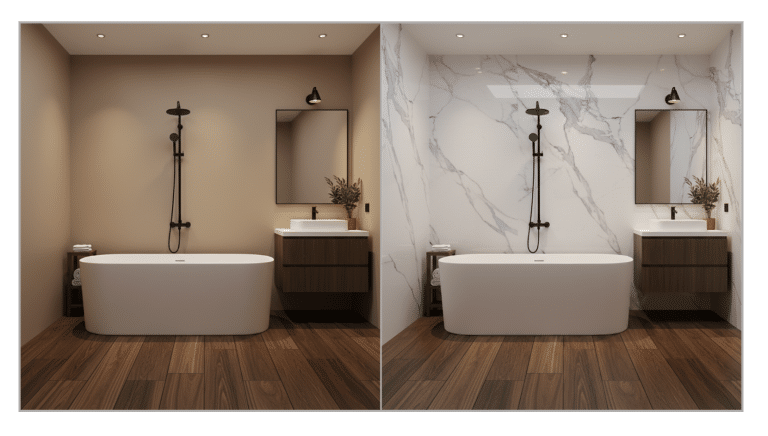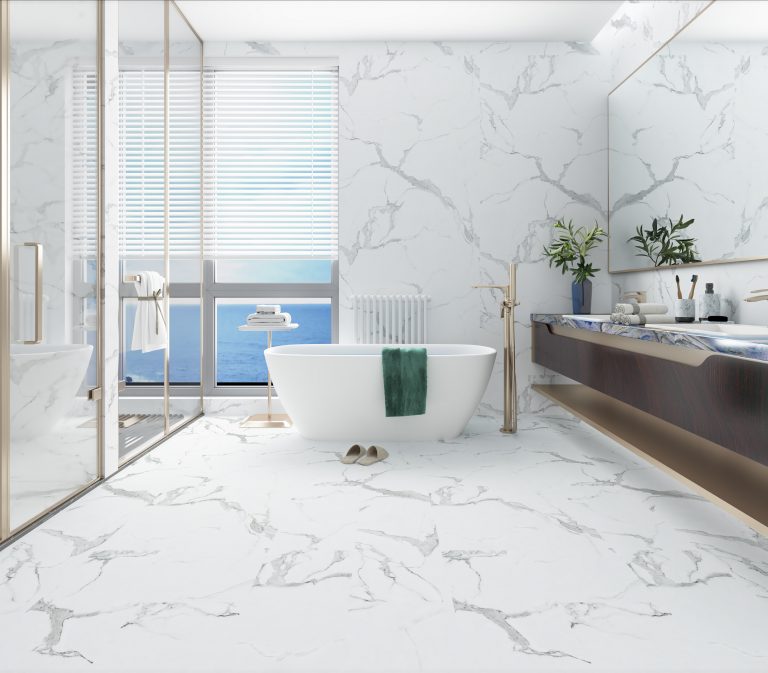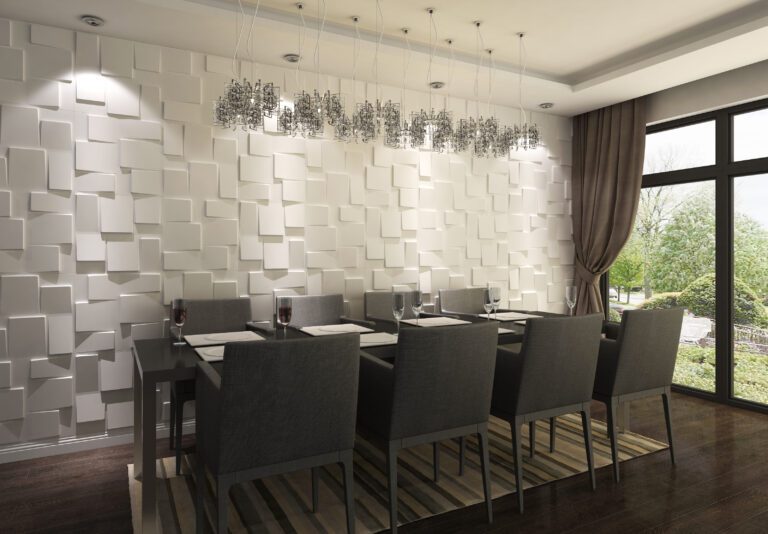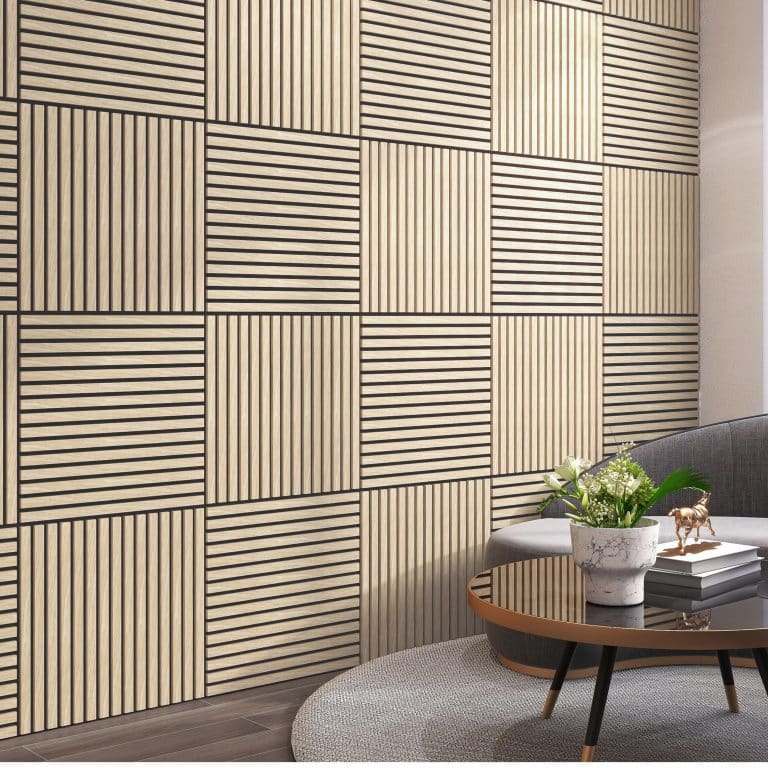No products in the cart.
Home > How to Achieve a Chic Home Makeover with Textured Wallpaper
How to Achieve a Chic Home Makeover with Textured Wallpaper
- February 24, 2025
- 10:07 pm
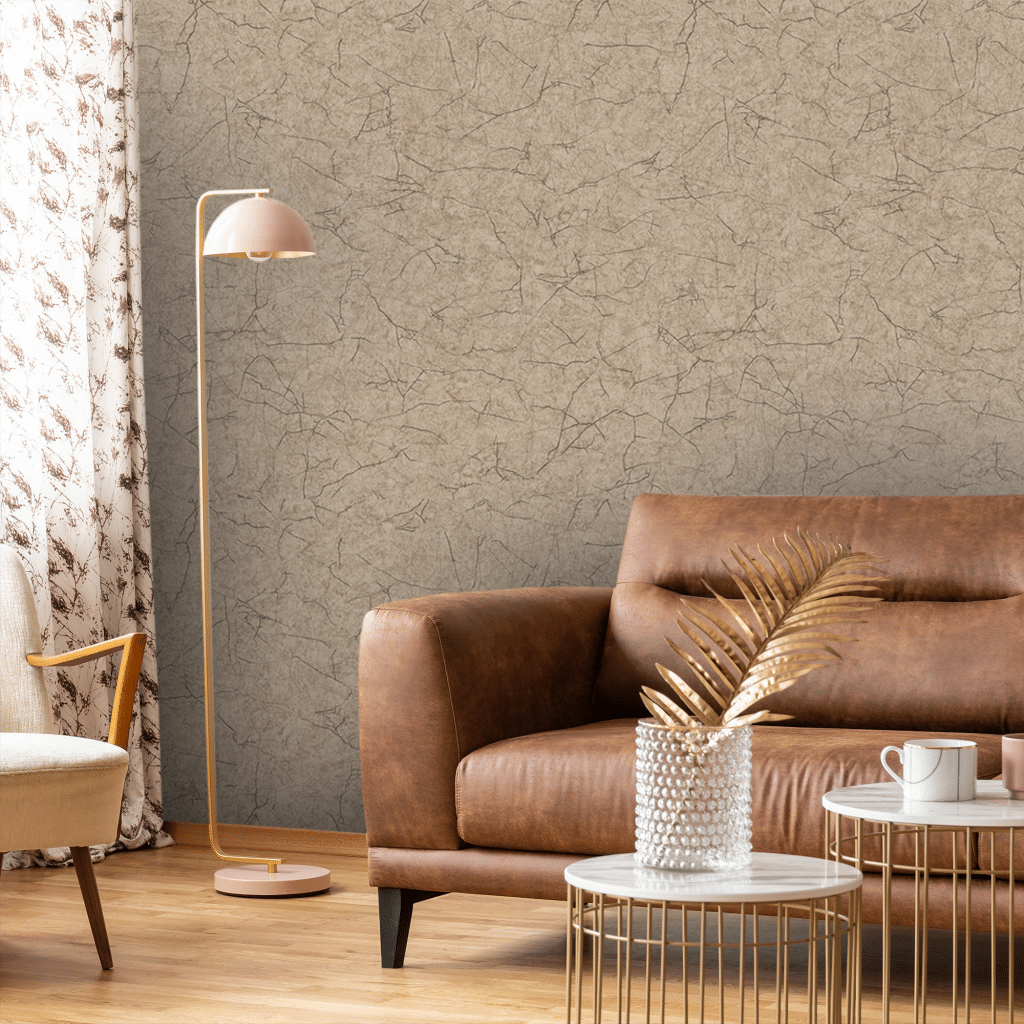
Transforming your home into a chic haven doesn’t have to be daunting. With the right textured wallpaper, you can effortlessly add depth, character, and sophistication to any room.
This guide will walk you through the essentials of choosing and maintaining textured wallpaper, ensuring your home makeover is timeless, beautiful, and functional. Whether you want to create a bold statement or a subtle backdrop, a modern wallpaper offers endless possibilities to elevate your space.
What Are the Benefits of Using Textured Wallpaper?
Textured wallpaper offers numerous advantages that can elevate any space. More than just a decorative feature, it enhances the atmosphere of a room by adding richness and artistic character.
The interplay of texture and light creates a unique visual effect, giving walls a sense of depth that flat surfaces cannot achieve. This ability to engage both sight and touch helps create a more immersive and inviting environment.
Depending on the chosen design, it can evoke a sense of luxury, warmth, or even drama, making it a powerful tool in interior transformation.
Enhances Aesthetic Appeal
- Adds depth and dimension to walls, making them appear more dynamic.
- Introduces a tactile element that enhances sophistication, similar to decorative wall panels.
- Creates a thoughtfully designed and stylish ambiance.
Offers Versatility
- Available in subtle patterns that mimic linen, grasscloth, and other materials.
- Comes in bold, three-dimensional designs for a striking visual impact.
- Complements a range of styles, from modern minimalism to timeless elegance.
Provides Practical Benefits
- Conceals minor wall imperfections like cracks or uneven surfaces.
- Reduces the need for extensive wall repairs in older homes.
- Many options are stain-resistant, scratch-resistant, and easy to maintain.
Improves Room Acoustics
- Helps absorb sound, reducing echo for a more pleasant atmosphere. For optimal sound absorption, consider acoustic wall panels.
- Ideal for home offices and media rooms where sound quality matters.
Textured wallpaper is an excellent choice for homeowners who want to add visual interest and personality to their space with minimal effort. Unlike labor-intensive wall treatments like plaster or paneling, it provides an easy yet high-impact way to refresh a room.
Additionally, its adaptability allows it to suit any aesthetic, from sleek contemporary settings to charming rustic interiors. Whether looking to create a cozy retreat or a bold statement wall, textured wallpaper is a practical and stylish solution that brings lasting beauty to any home.
Factors to Consider When Selecting Textured Wallpaper
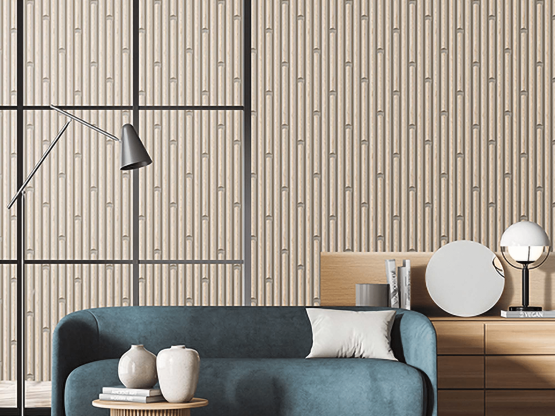
Several factors should be considered when selecting textured wallpaper for your space to ensure it enhances your room’s aesthetics and functionality.
Here are some key considerations to guide your decision:
Types of Textures
Textured wallpaper comes in various finishes, including flocked, grasscloth, and embossed wallpapers. Each type offers a unique tactile experience and visual appeal. Embossed wallpapers add depth and mimic materials like brick or wood, similar to our faux brick wall panels, while flocked wallpapers provide a velvety feel. Grasscloth, made from natural fibers, introduces an organic element to your decor.
Color and Pattern
The wallpaper’s color and pattern significantly influence the room’s ambiance. Light colors make a space feel larger and more open, while darker shades add warmth and coziness. Patterns can range from subtle to bold, and it is important to choose one that complements your room’s existing elements without overwhelming them.
Room Size and Scale
Consider the size of the room and the scale of the wallpaper’s texture and pattern. Opt for finer textures and smaller patterns in smaller spaces to avoid cramming the room. Bolder textures and patterns, on the other hand, can accommodate larger rooms, adding character and interest.
Lighting Conditions
The lighting in your room can affect how the wallpaper appears. Natural light can highlight textures and create shadows, enhancing the wallpaper’s three-dimensional effect. In contrast, artificial lighting may alter the perception of color and texture. It’s advisable to test wallpaper samples under different lighting conditions before deciding.
Durability and Maintenance
Evaluate the durability of the wallpaper, especially if it will be installed in high-traffic areas. Some textured wallpapers are more resistant to wear and tear, making them suitable for busy households. Additionally, consider the ease of maintenance; some textures may trap dust or be more challenging to clean.
By carefully considering these factors, you can select textured wallpaper that enhances the visual appeal of your space and meets your practical needs.
Maximize Natural Light with Metallic Finishes: Choose textured wallpaper with a subtle metallic sheen to reflect light and make a room feel brighter and more open. |
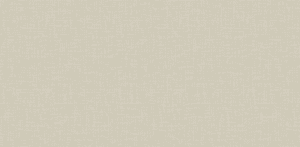
Textured Wallpaper of Premium Quality, Abstract Fabric in Beige
How Do I Match Textured Wallpaper with My Existing Decor?
When matching textured wallpaper with your existing decor, consider aesthetics and functionality to create a harmonious and stylish environment.
Color Coordination
- Choose wallpaper colors that complement or contrast with your current color scheme.
- Use a color wheel to identify complementary colors that can enhance the overall look of your space.
- Consider neutral tones if your decor is vibrant, or opt for bold wallpaper if your furnishings are more subdued.
Style Consistency
- Ensure the wallpaper style aligns with your home’s overall theme. For instance, a modern geometric pattern may suit a contemporary setting, while a floral or damask design might be better for a traditional space.
- Consider your decor’s era or design movement and select wallpaper that echoes those characteristics.
Texture and Pattern Balance
- Balance the wallpaper’s texture with the textures in your furniture and accessories. If you have many smooth surfaces, a heavily textured wallpaper can add depth and interest.
- Avoid overwhelming the space with too many patterns. Opt for more subtle peel and stick wall panels if your decor already features intricate designs.
Scale and Proportion
- Consider the scale of the wallpaper pattern to the room size and furniture. Large patterns can make a small room feel even smaller, while small patterns might get lost in a large space.
- Before making a final decision, visualize how the wallpaper interacts with the room’s elements using a sample.
Functional Considerations
- Think about the room’s purpose and how the wallpaper will function. For example, a more durable and easy-to-clean wallpaper might be necessary in high-traffic areas, such as the kitchen and bathrooms.
- Consider the lighting in the room, as it can affect how the wallpaper’s color and texture are perceived. Natural light can enhance certain textures, while artificial lighting might require a different approach.
By carefully considering these factors, you can successfully integrate textured wallpaper into your existing decor, creating a cohesive and chic home environment that reflects your personal style and meets your functional needs.
What Tools and Materials Do I Need for Installation?
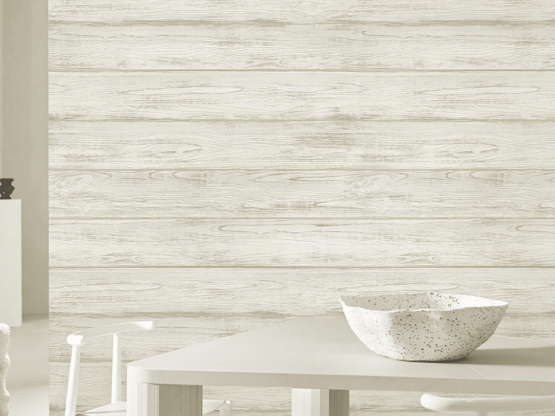
Installing textured wallpaper requires a thoughtful selection of tools and materials to ensure a seamless and aesthetically pleasing result. Here is a comprehensive list of essentials that will guide you through the process with ease and precision:
Wallpaper Paste or Adhesive
Choose a high-quality adhesive specifically designed for textured wallpaper. This ensures a strong bond and longevity, especially in areas with varying temperatures or humidity levels.
Smoothing Tool
A smoothing tool or wallpaper brush is crucial for eliminating air bubbles and ensuring the wallpaper adheres smoothly to the wall. Opt for a tool with a comfortable grip to facilitate ease of use over extended periods.
Utility Knife
A sharp utility knife is indispensable for trimming excess wallpaper and achieving clean edges. Ensure the blade is sharp to prevent the wallpaper from tearing or fraying.
Measuring Tape and Level
Accurate measurements are vital for aligning the wallpaper correctly. A measuring tape will help you determine the dimensions of the wall, while a level ensures that the wallpaper is applied straight, maintaining the design’s integrity.
Seam Roller
This tool is essential for pressing the seams between wallpaper strips, ensuring they are flat and less visible. A seam roller helps maintain a continuous pattern and prevents edges from lifting over time.
Drop Cloth or Protective Covering
Protect your floors and furniture with a drop cloth or similar covering. This keeps your space clean and prevents any adhesive spills from causing damage.
Sponge and Clean Cloth
Keep a damp sponge and a clean cloth handy to remove any excess adhesive that may seep during installation. This helps maintain the wallpaper’s appearance and prevents staining.
Pencil and Straightedge
Use a pencil to mark guidelines on the wall, ensuring precise placement of each wallpaper strip. A straightedge will assist in drawing straight lines, which is crucial for maintaining the pattern’s alignment.
By assembling these tools and materials before beginning your project, you set the stage for a successful installation combining functionality and aesthetic appeal. Each item is pivotal in achieving a professional finish, allowing the textured wallpaper to transform your space with elegance and style.
Layer Lighting to Highlight Texture: Wall sconces and strategically placed lamps can enhance the depth of textured wallpaper, creating a more dynamic visual effect. |
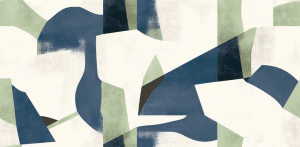
Textured Wallpaper of Premium Quality, Abstract, Grunge in Blue, Green
How Do I Use Textured Wallpaper in Small Spaces?
When considering the use of textured wallpaper in small spaces, it is essential to strike a balance between aesthetics and functionality. Textured wallpaper can add depth and interest to compact areas, but careful selection and application are crucial to avoid overwhelming the space.
Here are some practical tips to effectively use textured wallpaper in small rooms:
Choose Light Colors and Subtle Patterns
Opt for light-colored wallpapers with subtle textures to create an illusion of space. Light hues reflect more light, making the room appear larger and more open. Consider patterns that are not too busy or intricate, as these can make a small room feel cluttered.
Vertical Textures for Height
Use Vertical textures or patterns to draw the eye upward, creating a sense of height. 3d wall panels are particularly effective for this purpose. This technique can make low ceilings appear taller and add a sense of grandeur to the room.
Accent Walls
Apply textured wallpaper to a single accent wall to add interest without overwhelming the entire space. This approach allows you to enjoy the benefits of texture while maintaining a balanced design. Choose a wall that naturally draws attention to enhance the room’s focal point, such as the one behind a bed or sofa. Wall panels can also create stunning accent walls.
Coordinate with Furniture and Decor
Ensure that the textured wallpaper complements the existing furniture and decor. Harmonizing colors and styles can create a cohesive look that enhances the room’s overall aesthetic. Use a simple color palette for furniture and accessories to make the textured wallpaper stand out as a feature element.
Reflective Surfaces and Lighting
Incorporate mirrors and reflective surfaces to amplify the effect of textured wallpaper. These elements can help bounce light around the room, enhancing the sense of space. Adequate lighting is essential to highlight the texture and add dimension.
Consider using layered lighting, such as ambient, task, and accent lighting to effectively showcase the wallpaper’s texture.
By thoughtfully selecting and applying textured wallpaper, small spaces can be transformed into stylish and inviting areas that feel larger and more dynamic.
What Are the Best Practices for Cleaning Textured Wallpaper?
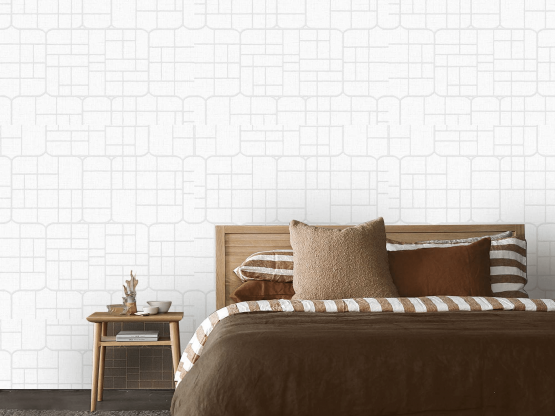
Cleaning textured wallpaper requires a gentle approach to preserve its intricate designs and maintain its aesthetic appeal. Here are some best practices to ensure your wallpaper remains in pristine condition:
Regular Dusting
Use a soft, dry cloth or a feather duster to remove dust from the surface gently. For more delicate textured wallpaper, a vacuum cleaner with a brush attachment can be effective. Ensure the vacuum is set to a low suction setting to avoid damaging the wallpaper.
Spot Cleaning
For small stains or marks, use a damp sponge or cloth. Avoid soaking the wallpaper, as excessive moisture can weaken the adhesive. For tougher stains, a mild soap solution can be used. Mix a few drops of gentle dish soap with warm water, and test the solution on an inconspicuous area first to ensure it does not affect the color or texture.
Avoid Harsh Chemicals
Avoid abrasive cleaners, bleach, or ammonia-based products, as these can strip the wallpaper of color and texture. Instead, opt for specialized, gentle wallpaper cleaning solutions on textured surfaces
Blot, Don’t Rub
When cleaning, always blot the area rather than rubbing it. Rubbing can spread the stain and damage the texture. Use a clean, dry cloth to blot away any excess moisture after cleaning.
Addressing Grease and Oil Stains
For grease or oil stains, sprinkle a small amount of cornstarch or talcum powder on the affected area. Let it sit for a few hours to absorb the oil, then gently brush it with a soft brush.
Routine Maintenance
Establish a regular cleaning schedule to prevent the buildup of dirt and grime. This not only keeps the wallpaper looking fresh but also extends its lifespan. Consider using a dehumidifier in rooms with high moisture levels to prevent mold and mildew growth on the wallpaper.
By following these best practices, you can maintain the beauty and functionality of your textured wallpaper, ensuring it continues to enhance your home’s decor for years to come.
Transform Your Walls with Texture and Elegance
Textured wallpaper offers a stylish and versatile way to transform your home, adding depth and character to any space. By carefully selecting the right texture, installing it precisely, and maintaining it properly, you can achieve a chic and functional makeover that enhances your decor.
Whether creating a focal point or experimenting with creative applications, textured wallpaper is a practical choice for elevating your home’s aesthetic appeal.
Browse our premium wallpaper collection today and find the perfect design to bring your dream home to life—at a regular price that makes luxury accessible!
Related Posts
Snap Your Space, See Our Style!
Ever scrolled through a website and wondered how wall panels, floor tiles, or ceiling tiles would look in your space? …
Tile-Free Interiors: Why SPC and PVC Wall Panels Are the Future
Wall panels have become one of the most exciting alternatives to traditional tiles in modern interiors. Designers and homeowners alike …
Sustainable and Eco-friendly 3D Wall Panel Options
Sustainable and eco-friendly 3D wall panels are an innovative solution for environmentally conscious interior design. These panels are crafted from …
Best 3D Wall Panels for Commercial Spaces
Modern commercial interiors often prioritize thoughtful design, ambiance, and customer perception. One of the most effective and budget-friendly ways to …

